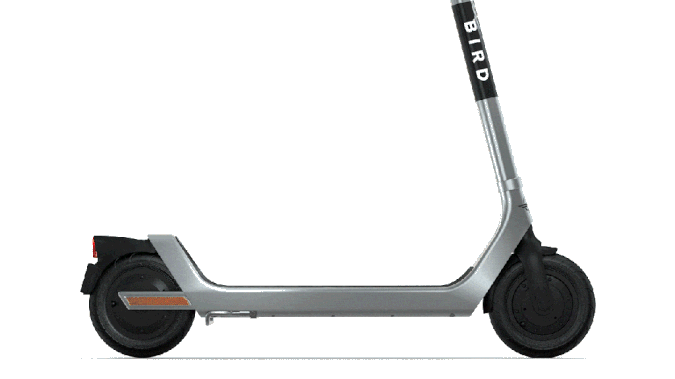
[ad_1]
Bird today introduced its latest electric scooter, the Bird Three. It has a longer wheelbase and wider handlebars that come coated with an anti-microbial agent. Internally, Bird Three features a battery with a capacity of “up to 1 kWh.” That’s a much larger power cell than you’ll find in the company’s previous One and Two models and even other scooters. The battery is also hermetically sealed and IP68-rated against water and dust. In fact, with a claimed lifespan of at least 14,000 miles, the battery in most Bird Three models is likely to outlive the scooter in which it’s installed. The company claims it’s a design that’s better for the environment. “Smaller and swappable batteries lead to higher overall manufacturing emissions and require more vehicle miles traveled to retrieve, replace, and recharge scooters,” Bird says.

Bird
And while Bird spent a lot of time thinking about the battery on the Bird Three, it also made the scooter itself more rugged. The new model is made from a type of aerospace-grade aluminum the company leads to “best-in-class durability.” Its own testing shows a Bird Three can withstand more than 60,000 curbside impacts. The scooter’s brake cables are also covered and hidden from view to protect them from weather damage and vandalism. Other upgrades include an “automotive-grade” dual-sensor throttle for added safety and precision. Meanwhile, some features that have carried over from the Bird Two include an autonomous emergency braking system and a handy beginner mode that makes acceleration more gentle. Each Bird Three also comes with more than 200 built-in sensors that allow the company to monitor each vehicle for component issues and failures.
All those features lead to a scooter Bird says will “keep riders safe, cities clean and, most importantly, carbon emissions as low as possible.” And while Bird certainly makes a case for the Bird Three representing a more sustainable design, it’s hard to say if its newest model will address some of the core environmental issues that plague electric scooters. A 2019 study by North Carolina State University found that traveling by electric scooter produces more greenhouse emissions per mile than when you go somewhere on foot, bike or bus. Electric scooters might not produce tailpipe emissions, but you have to factor in the climate impact of companies like Bird and Lime collecting their vehicles at the end of the day to charge them. The prevalence of scooter vandalism is also a significant issue, with some lakes, rivers and waterways in the US becoming dumping grounds for the vehicles. Those are systemic issues that are hard to solve with a single redesign.
All products recommended by Engadget are selected by our editorial team, independent of our parent company. Some of our stories include affiliate links. If you buy something through one of these links, we may earn an affiliate commission.
[ad_2]
Source link






